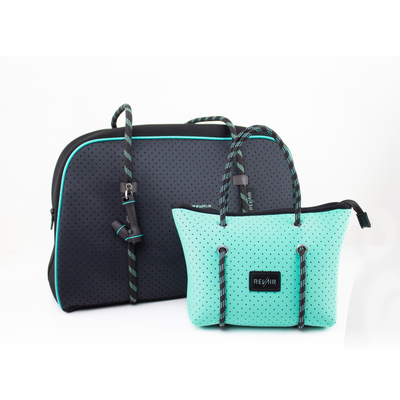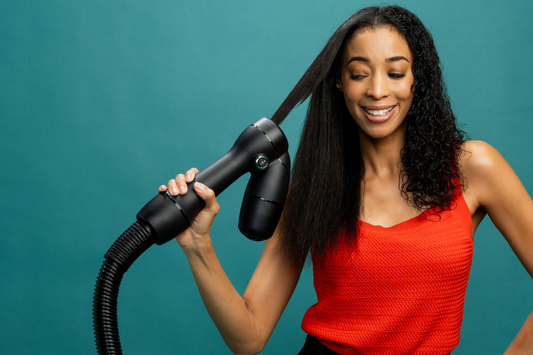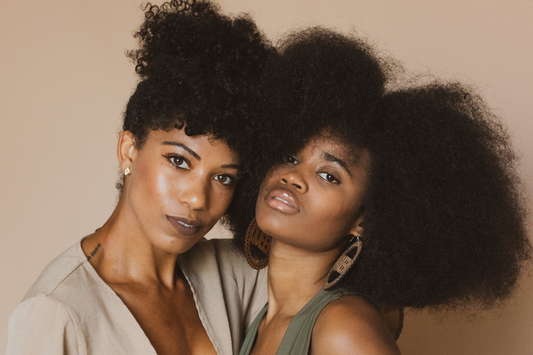
7 Simple Tips for Transitioning to Your Natural Texture

Transitioning back to natural curls can be challenging when you’ve been chemically straightening, flat ironing, or doing anything but embracing your God-given curl pattern. Don’t worry, we’ve got you! Kickstart your journey back to healthy hair with these vetted hair care tips.
1. Learn the Art of Patience
Contrary to popular belief, transitioning doesn't happen overnight. Whether you decide to gradually grow out a relaxer or go all out for a big chop, know that it's going to take some time—three to four months or thereabout—to start seeing some real changes. Hang in there and manage your expectations the best you can!
It'll be tough, no doubt, but try to be patient. Use this waiting period to get to know your natural hair inside-out. Do you know your hair type and porosity level? These identifiers can be key in creating a product regiment and routine that best suits your natural hair.
2. Give Your Transitioning Hair Some TLC
While practicing patience is important, it’s also crucial to give your hair loads of love while you’re at it. Utilizing tools that are gentle on your strands is key. This is especially true for the point where your natural texture meets your straight hair or damaged ends (it's called the line of demarcation). This is the MOST fragile part of your length and, by default, deserves a little more TLC.
Your hair is most delicate when it's wet. Take your time when you detangle and style your hair so as to avoid breakage at the line of demarcation (and elsewhere)! Using gentle tools like wide-toothed combs or brushes designed for wet hair are good swaps. Try to stay away from fine-tooth combs or brushes that pull and snag on your hair when it’s wet.
Pro tip: Make sure you aren’t causing damage in your sleep! Upgrade your night routine and swap your cotton pillowcase for one that's made of silk or satin. Or, if you feel that's a little bit of a stretch, wear a satin or silk head scarf/bonnet instead. Satin and silk products are great alternatives because of their smooth texture, which allows your hair to slide across the pillow, reducing snags and frizz-inducing rubbing while you sleep.
3. Experiment With Protective Hairstyles

When transitioning back to your natural texture, trial and error is the name of the game. Consider trying out different protective styles to see what you like best and to gain practice. A few basics include:
- Bantu knots
- Flat twists
- Twist outs with rod sets
- Box braids
- Cornrows
- Weaves
- Wigs
- Knotless braids
Be sure that the style you choose is installed properly and without excess tension—this can damage new growth at the scalp! Also, if you choose to rock a protective style for a while, expect to see accumulated shedding once you take the style down, this is normal! Shedding is a crucial part of the hair growth process.
4. Create a Simple "Wash Day" Routine
You've heard the excuse (or maybe you've used it yourself). "I can't. I have to wash my hair."
A typical wash day routine could look like this:
- Pre-poo treatment (deep conditioning before shampoo)
- Shampooing (hopefully with a sulfate-free shampoo)
- Post-shampoo conditioner
- Protecting and moisturizing
- Drying and styling
With so many steps in the washing process, it's no wonder that many delay going natural. (It's not called "wash DAY" for nothing!)
But, it doesn't have to take all day. Simplify your day (and your life) with tools like RevAir, you can actually cut the time it takes to dry and style your curly hair.
5. Go Easy On Heat Styling
Since your transitioning hair is in an incredibly fragile state, it's best to stay away from excessive heat for the most obvious reason of all—to protect it from breakage. And over time, the high heat from hot tools can jeopardize the state of your new curls by damaging their curl pattern. Heat damaged curls may look warped or stretched out.
Instead, try making low-heat swaps. Many are saying goodbye to their old-school hairdryers, opting for a less damaging solution. Reverse-Air technology is a hair drying alternative that circulates air naturally to gently dry, stretch, straighten transitioning hair and without the need for high heat.
6. Moisturize, Moisturize, Moisturize!
Moisturizing is arguably the single most important thing you can do for your transitioning hair to maintain its elasticity and keep the fragile curls growing. As your natural curls come in, it might be a little harder for the scalp's natural oils to move down the hair shaft, making moisturizing all the more important.
Look for a leave-in moisturizer that pulls together hydrating ingredients like hyaluronic acid, glycerin, and penetrating oils like grapeseed and avocado oil. Stay away from drying ingredients, such as all of the alcohols and ingredients that will disturb your true pattern.
7. A Little Off the Top?
The "big chop" (cutting off all of your relaxed hair and growing out your natural texture) is not always the answer for everybody. For those of you looking to ease your way through the transitioning process, we strongly suggest the "little trim off," where you trim one or two inches of relaxed hair every four weeks.
Routine trims will ultimately allow more space for your natural hair texture. You'll also be able to maintain your hair length throughout the transition, if that is important to you!
Growing out curls doesn’t have to be intimidating. Your journey to natural, pride-inducing curls is as unique as you are. Don’t rush the process, but enjoy the results! By implementing a few of these tips, your journey to re-discovering your natural curl pattern will be faster, easier and healthier overall.
Looking for more natural hair tips? Contact our team today to discover how RevAir can save you time, and save your curls from the heat exposure.















